Gallery
- Overmodelled skull, Vanuatu.
- Overmodelled skull, Vanuatu.
- Skull in the musée du quai Branly.
- Skull of the musée d'ethnographie de Genève, 19th.
- Overmodelled skull in Amman, neolithic era.
An overmodelled skull is a skull covered with various materials to reconstruct the appearance of a human head. This technique of art and religion is described in many countries throughout the ages.
A custom that has existed since the Neolithic era, it is widespread in Oceania and the Near East. [1] It originated as a cult of ancestors and consists of covering the dry skull with a plastic material, such as earth, clay, ash, plaster or lime. [2] Skulls can be embellished with pigments, jewellery etc. Sometimes, skulls of animals are also over-modelled. [3]

The Musée de Cluny, officially Musée de Cluny-Musée National du Moyen Âge, is a museum of medieval art in Paris. It is located in the 5th arrondissement of Paris, bordered by square Samuel-Paty to the south, boulevard Saint-Michel to the west, boulevard Saint-Germain to the north, and rue Saint-Jacques to the east.

The Musée de l'Homme is an anthropology museum in Paris, France. It was established in 1937 by Paul Rivet for the 1937 Exposition Internationale des Arts et Techniques dans la Vie Moderne. It is the descendant of the Musée d'Ethnographie du Trocadéro, founded in 1878. The Musée de l'Homme is a research center under the authority of various ministries, and it groups several entities from the CNRS. The Musée de l'Homme is one of the seven departments of the Muséum national d'histoire naturelle. The Musée de l'Homme occupies most of the Passy wing of the Palais de Chaillot in the 16th arrondissement. The vast majority of its collection was transferred to the Quai Branly museum.

The Musée du Quai Branly – Jacques Chirac, located in Paris, France, is a museum designed by French architect Jean Nouvel to feature the indigenous art and cultures of Africa, Asia, Oceania, and the Americas. The museum collection comprises more than a million objects, of which 3,500 are on display at any given time, in both permanent and temporary thematic exhibits. A selection of objects from the museum is also displayed in the Pavillon des Sessions of the Louvre.
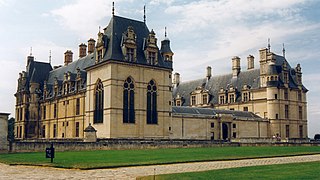
The Château d'Écouen is an historic château in the commune of Écouen, some 20 km north of Paris, France, and a notable example of French Renaissance architecture. Since 1975, it has housed the collections of the Musée national de la Renaissance.

The Painter and His Model is a work by Henri Matisse painted late 1916, early 1917. It is currently in the collection of the Musée National d'Art Moderne, Centre Georges Pompidou, Paris. In this work Matisse depicted himself in his studio on the fourth floor of 19 Quai Saint-Michel, at work on his painting Laurette in a Green Robe (1916).
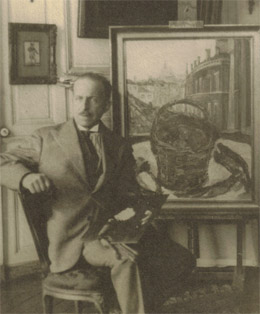
Georges Dufrénoy was a French post-Impressionist painter associated with Fauvism.

The Musée d'Ethnographie du Trocadéro was the first anthropological museum in Paris, founded in 1878. It closed in 1935 when the building that housed it, the Trocadéro Palace, was demolished; its descendant is the Musée de l'Homme, housed in the Palais de Chaillot on the same site, and its French collections formed the nucleus of the Musée National des Arts et Traditions Populaires, also in the Palais de Chaillot. Numerous modern artists visited it and were influenced by its "primitive" art, in particular Picasso during the period when he was working on Les Demoiselles d'Avignon (1907).

Louis Auvray was a French sculptor and art critic. He was the pupil of David d'Angers and was the brother of Félix Auvray, a painter. He continued the Dictionnaire Général des Artistes de l'école française depuis l'origine des arts du dessin jusqu'à nos jours, started by Émile Bellier de La Chavignerie.
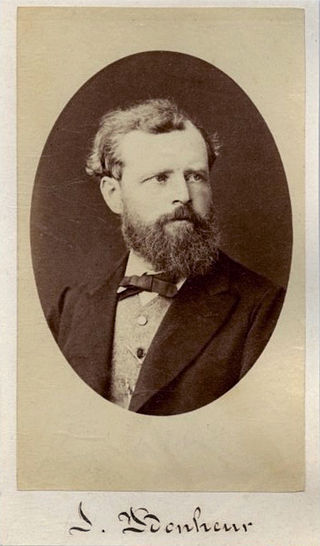
Isidore Jules Bonheur, best known as one of the 19th century's most distinguished French animalier sculptors. Bonheur began his career as an artist working with his elder sister Rosa Bonheur in the studio of their father, drawing instructor Raymond Bonheur. Initially working as a painter, Isidore Jules Bonheur made his Salon debut in 1848.

Didier Ottinger, born in Nancy in 1957, is a French museum curator, art critic and author. He is known for organizing exhibitions and publishing books on modern and contemporary painting. He is now assistant director of the Centre Pompidou at the Musée national d'art moderne in Paris.

Diana Widmaier Picasso is a French art historian specialized in modern art, living in Paris.

Henri Guinier was a French portrait and landscape painter.

Alain Erlande-Brandenburg was a French art historian and honorary general curator for heritage, a specialist on Gothic and Romanesque art.

The Seine at Port-Marly, Piles of Sand is an 1875 painting by Alfred Sisley. It was exhibited at the Exposition Universelle in 1900 whilst in the collection of Dr. Georges Viau, a Paris dentist and art collector. By 4 March 1907 it was owned by Durand-Ruel, who tried and failed to auction it on 4 March that year. It was bought by the galerie Bernheim-Jeune in April 1920 and later by Martin A. Ryerson. In 1933 Ryerson left it to its present owner, the Art Institute of Chicago, where it is now in section 201 (Impressionists) on the 1st floor of the Art Institute of Chicago.
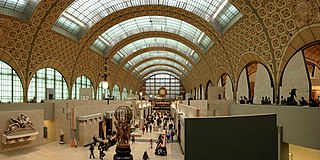
The 136 museums in the city of Paris display many historical, scientific, and archeological artifacts from around the world, covering diverse and unique topics including fashion, theater, sports, cosmetics, and the culinary arts.
Emmanuel Kasarhérou is the curator of Musée du quai Branly – Jacques Chirac, located in Paris, France. He is the first Kanak person to head a major museum in mainland France. He is the former head of the Jean-Marie Tjibaou Cultural Centre in New Caledonia. He specializes in the art of New Caledonia and Oceanic cultures.

Louis-Emile Durandelle was a French architectural photographer. Durandelle is best known for his documentary photographs of the construction of Parisian buildings, including the Eiffel Tower and the Paris Opera.
National Museum Recuperation is the French state organization that manages the looted artworks recovered from Nazi Germany and returned to France after the Second World War. Of 61,000 looted artworks returned to France, 2143 remain in custody of the MNR.

Hughes Dubois is a photographer specialized in the photography of artworks.
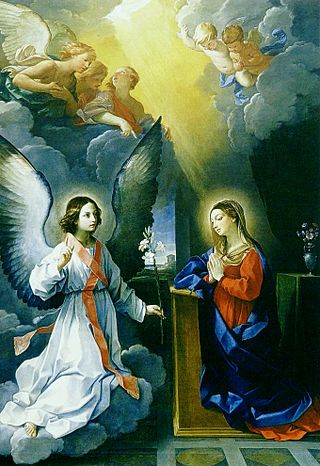
Annunciation is an oil on canvas painting by Guido Reni, commissioned by Marie de' Medici and probably painted in early 1629. The first large painting by the artist to reach France, it is now Inventory Number 521 in the Louvre Museum, displayed on the first floor in Room 12 of the Grande Galerie. Reni also produced an earlier and less-worked-up version of the work in 1621 for the church of San Pietro in Valle, Fano which is now in that town's art gallery.